Your Air Mattress Doesn’t Have to Suck: A Guide to Actually Sleeping Well
Let’s be honest, the words “air mattress” don’t exactly scream “a great night’s sleep.” For most people, they bring up memories of waking up cold, sore, and folded into a soft plastic taco. But after years of working with every temporary bed you can imagine, from setting up floor displays to helping families camp out during a remodel, I’ve learned a secret: it doesn’t have to be that way.
In this article
An air mattress can be a genuinely comfortable place to sleep. The problem is, most of us just inflate it, toss on a single blanket, and call it a night. That’s a recipe for disaster. This guide is about treating it like a real bed system, from the ground up. We’re going to cover why they get so cold, why they always seem to lose air, and how to build a setup that’s warm, stable, and supportive. With the right approach, you or your guests can get a solid night’s rest, even for a week or more.
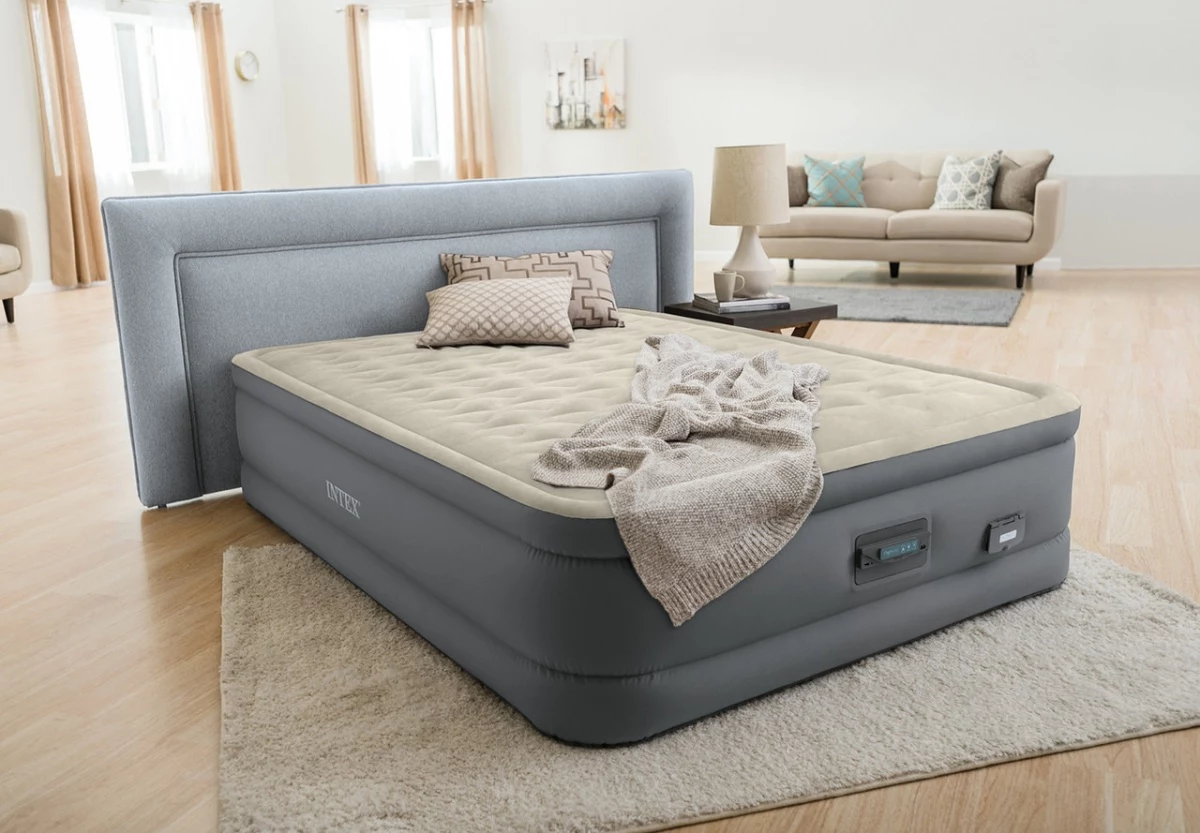
First, Why Air Mattresses Behave So Strangely
Before we can fix the common problems, it helps to know what’s actually going on. An air mattress is a simple thing, but a few basic principles of science are working against your comfort. Once you know the ‘why,’ the ‘how’ makes a lot more sense.
The Cold, Hard Truth About Temperature
The number one complaint I hear is, “I was freezing all night!” It’s not in your head. Your body is a little furnace, and when you lie on an air mattress, that heat warms up the air directly under you. But the air inside isn’t just sitting still—it circulates. The warm air moves around, and cooler air from other parts of the mattress rushes in to take its place. It’s a process called convection.
So, the mattress is constantly pulling your body heat away. And where does that heat go? Straight into the floor. A concrete, tile, or even hardwood floor acts like a giant heat sink, sucking the warmth right out. Air is normally a good insulator, but not when it’s moving freely like this. Don’t worry, we’ll fix this.
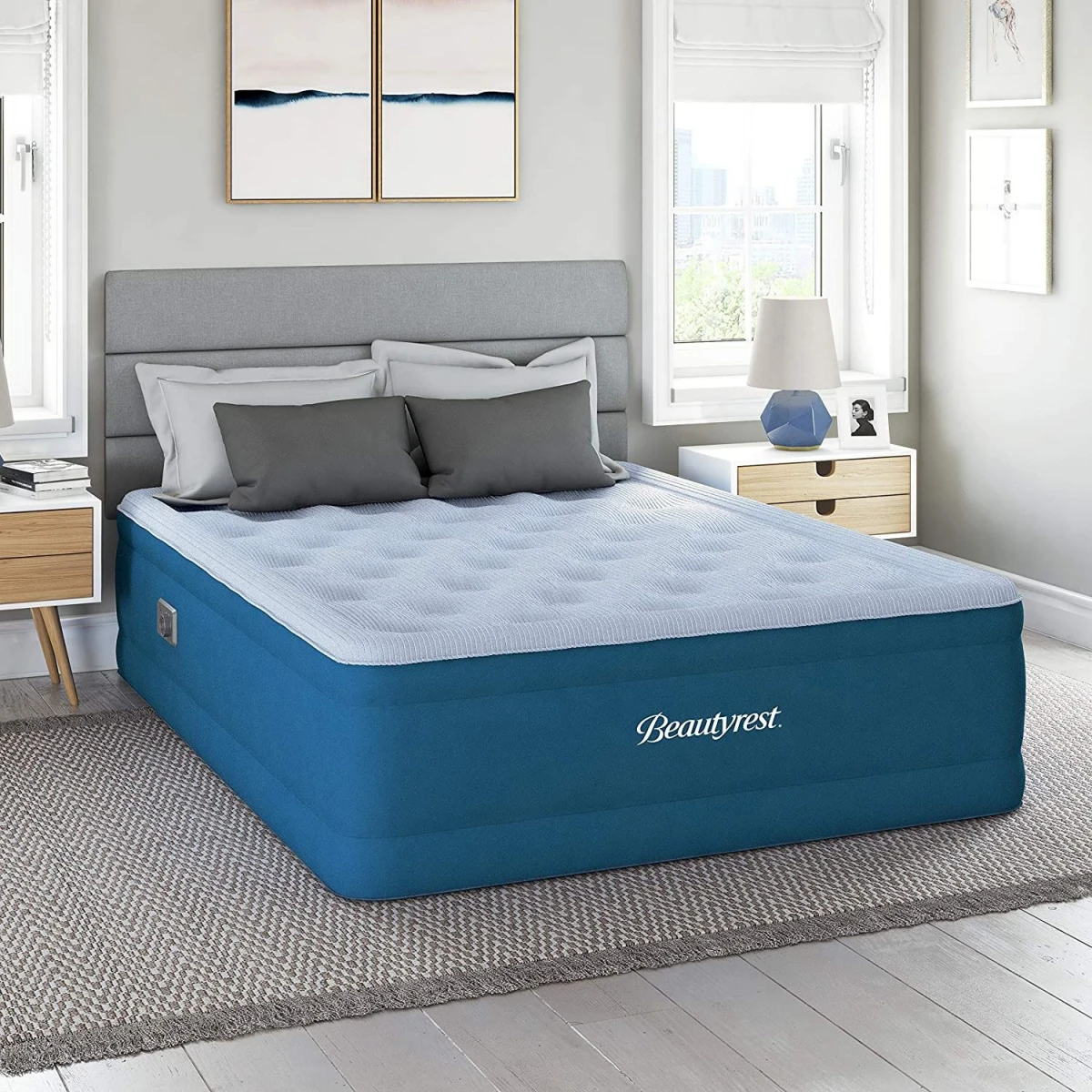
The Mystery of the “Overnight Leak”
Most air mattresses are made from PVC (Polyvinyl Chloride). It’s cheap and durable, but it has a quirk: it stretches. This is the real reason your brand-new mattress feels like it’s leaking on the first night. You inflate it until it’s perfectly firm, go to sleep, and wake up in a saggy mess. It’s almost never a hole. The PVC material has simply stretched out under the pressure and your body weight.
This stretching is most noticeable in the first day or two of use. It’s a totally normal part of the break-in process. Just expect it to happen.
What Separates a Bed from a Pool Raft
Older air mattresses were basically glorified pool floats with zero internal support. Lie on one, and all the air would rush to the sides, creating a horrible hammock effect that wrecks your back. Thankfully, modern mattresses are much better engineered.
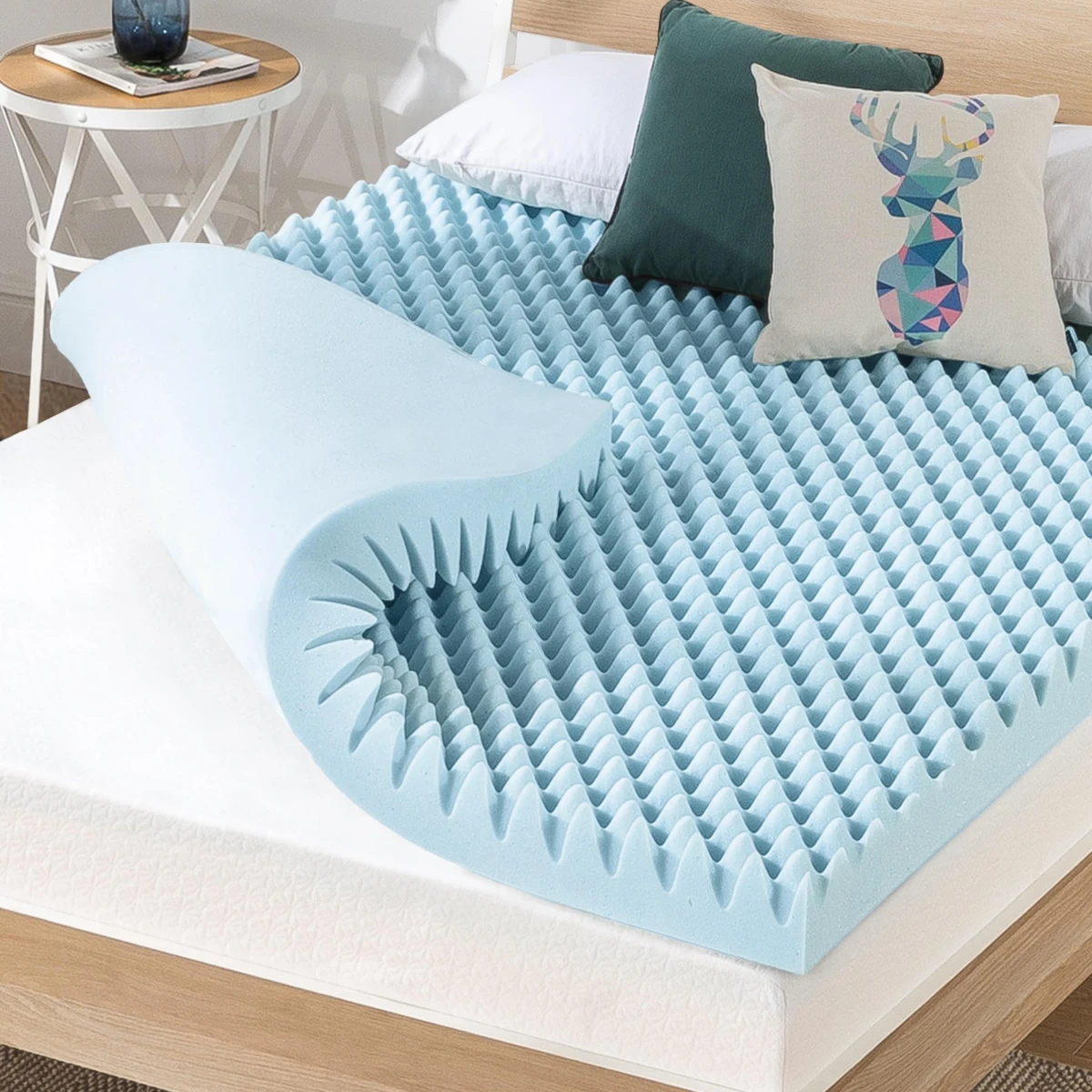
They now use internal structures to create a flat, stable surface. Look for terms like “coil-beam,” “air-coil,” or “truss support” when you’re shopping. These are essentially a network of internal baffles that connect the top and bottom surfaces, distributing your weight evenly. This internal design is the single biggest factor in how supportive a mattress feels. You can find a decent queen-size with these internal coils for about $50-$90 from well-known brands like Intex or Coleman, while a basic one without them might be under $40.
Inflation: The Most Important Step
Getting the inflation right is everything. Too firm is like sleeping on a board; too soft offers zero support. You’re aiming for that perfect balance of firm support with a little bit of give.
The Pro Method: Two-Stage Inflation
To deal with that initial PVC stretch, you have to inflate your mattress in two stages. This is the trick to avoiding that midnight deflation.
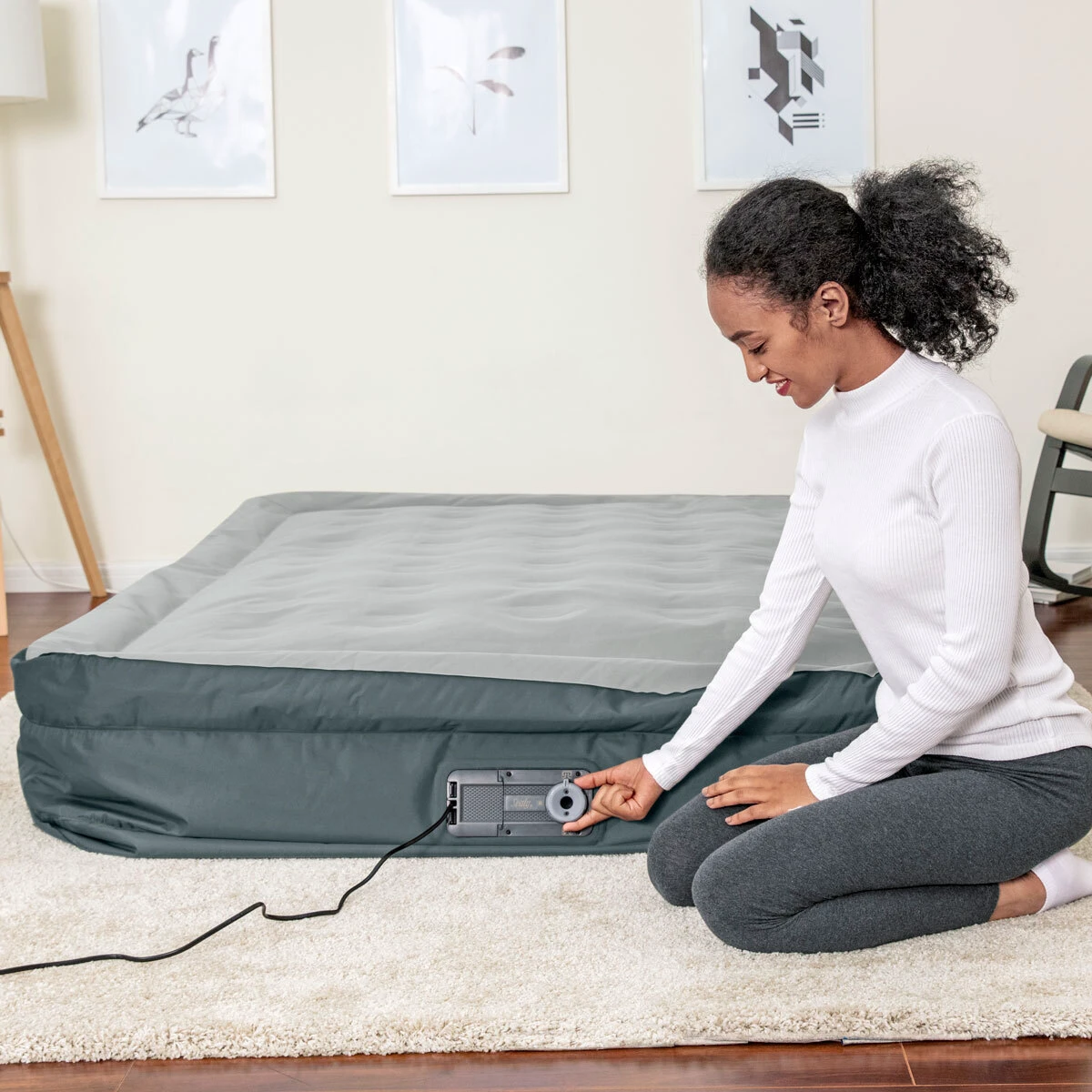
Stage One: The Stretch Fill. About 4 to 6 hours before bedtime, inflate the mattress until it’s very firm to the touch. Then just leave it alone in the room where it will be used. Over the next few hours, the material will stretch and settle. You’ll see that it’s gotten noticeably softer.
Stage Two: The Pre-Sleep Top-Off. Right before you make the bed, top it off with more air. This time, you’re not aiming for drum-tight. You’re aiming for the perfect sleeping firmness. This second inflation stabilizes the mattress for the night.
Finding the Sweet Spot: The Hand-Press Test
So what’s the perfect firmness? It’s not a number; it’s a feel. Here’s the simple test I always use: With the mattress inflated, place your palm flat in the center and push down with your upper body weight. The surface should give about 2 to 3 inches. It should feel supportive but not rigid. If your hand barely sinks, it’s overinflated and will create pressure points on your hips and shoulders.
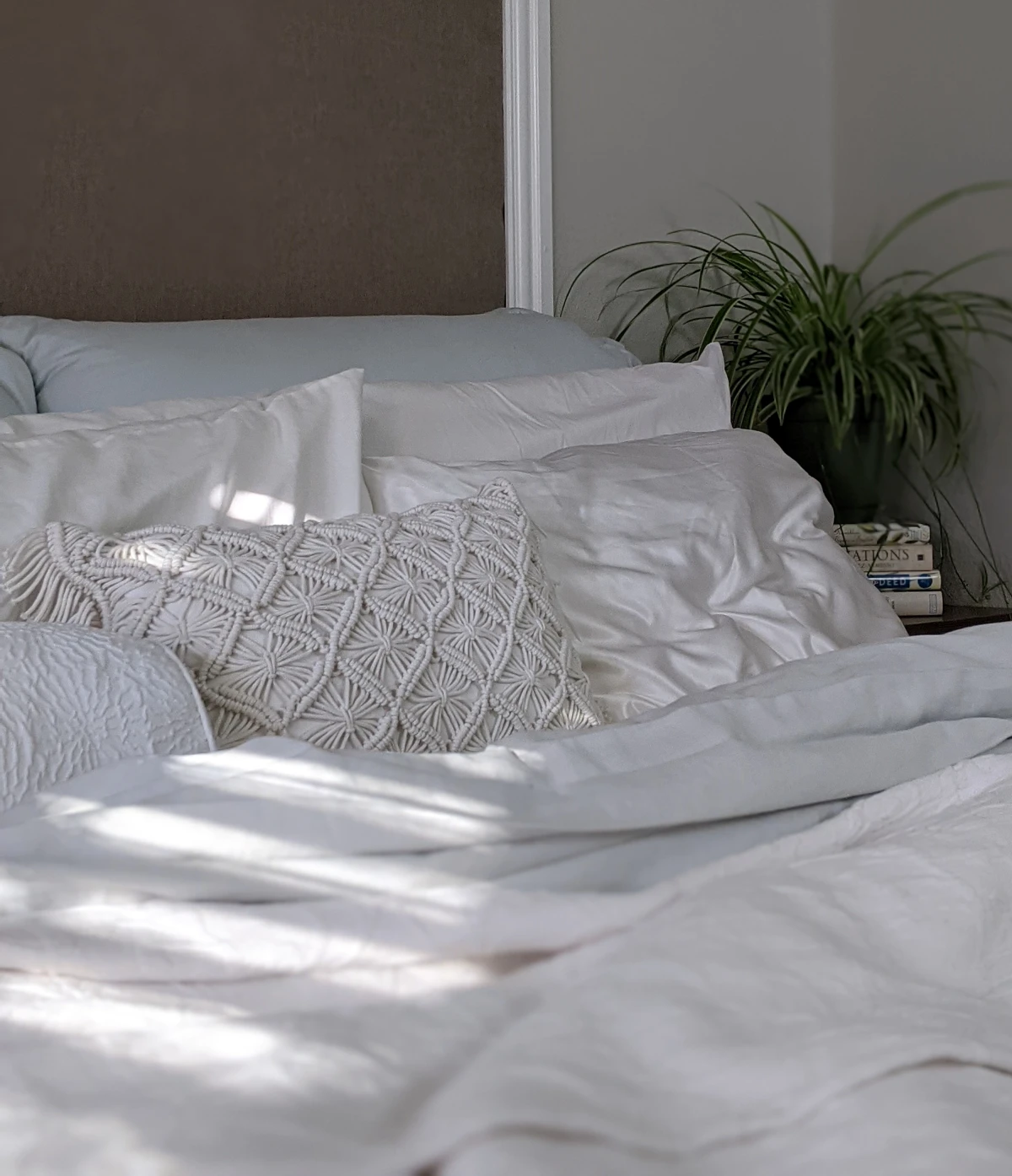
Quick tip for side sleepers: You’ll want it a little softer than a back sleeper would. That 2 to 3-inch give is your sweet spot to avoid waking up with a sore shoulder.
Building Your Base: Insulation is Everything
Never, ever place an air mattress directly on a cold, hard floor if you can avoid it. It’s a guaranteed way to be cold, and it’s noisy. The solution is to build a simple base layer.
In a Hurry? The One Thing You MUST Do:
If you only do one thing from this guide, do this: put a layer of insulation between the mattress and the floor. This stops the floor from sucking away all your body heat. It makes a bigger difference than any fancy blanket you can put on top.
Your best bet is a thick area rug, but often that’s not enough. For years, my go-to recommendation has been a simple moving blanket. They’re thick, soft, and amazing insulators. You can grab one for about $15-$25 at U-Haul, a hardware store, or online. It’s a total game-changer.
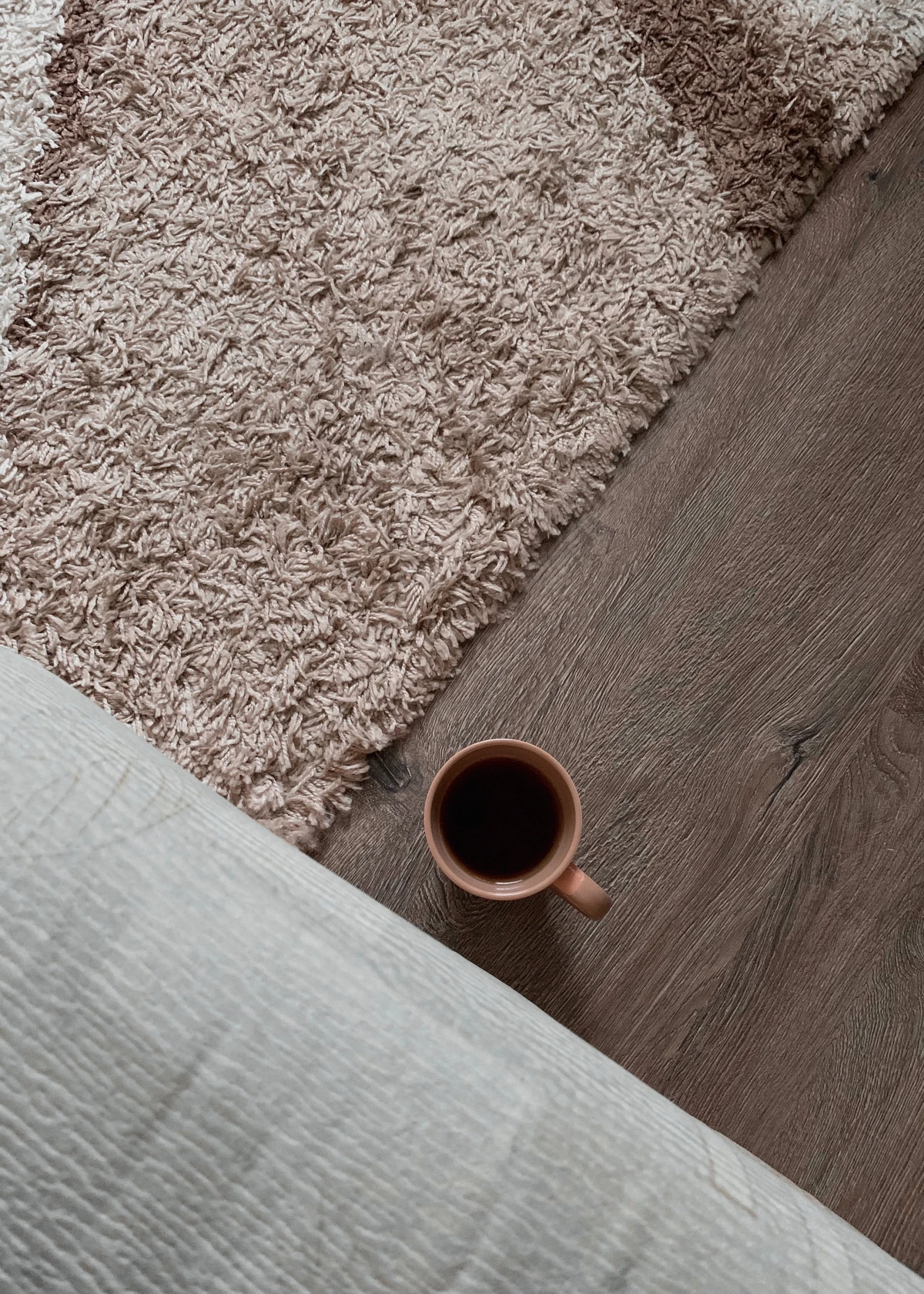
A few other great options:
- Foam Camping Pads: Those closed-cell foam pads for camping work wonders.
- Yoga Mats: A couple of thick yoga mats laid side-by-side create a decent thermal break.
- Cardboard: Seriously! In a pinch, a large, flattened cardboard box is surprisingly effective. The corrugated structure traps air, acting as a natural insulator.
Oh, and by the way, this base layer also protects the mattress from punctures and stops that awful squeaking sound of plastic rubbing on the floor.
The Top Layer: Turning It Into a Real Bed
With a stable, insulated, and properly inflated base, the final step is making the top feel like a welcoming bed, not a vinyl slab.
The Magic of a Mattress Topper
A mattress topper is the single best upgrade you can buy for air mattress comfort. It adds cushioning, provides another layer of insulation, and makes you forget what you’re sleeping on. Here’s a quick rundown of your options:
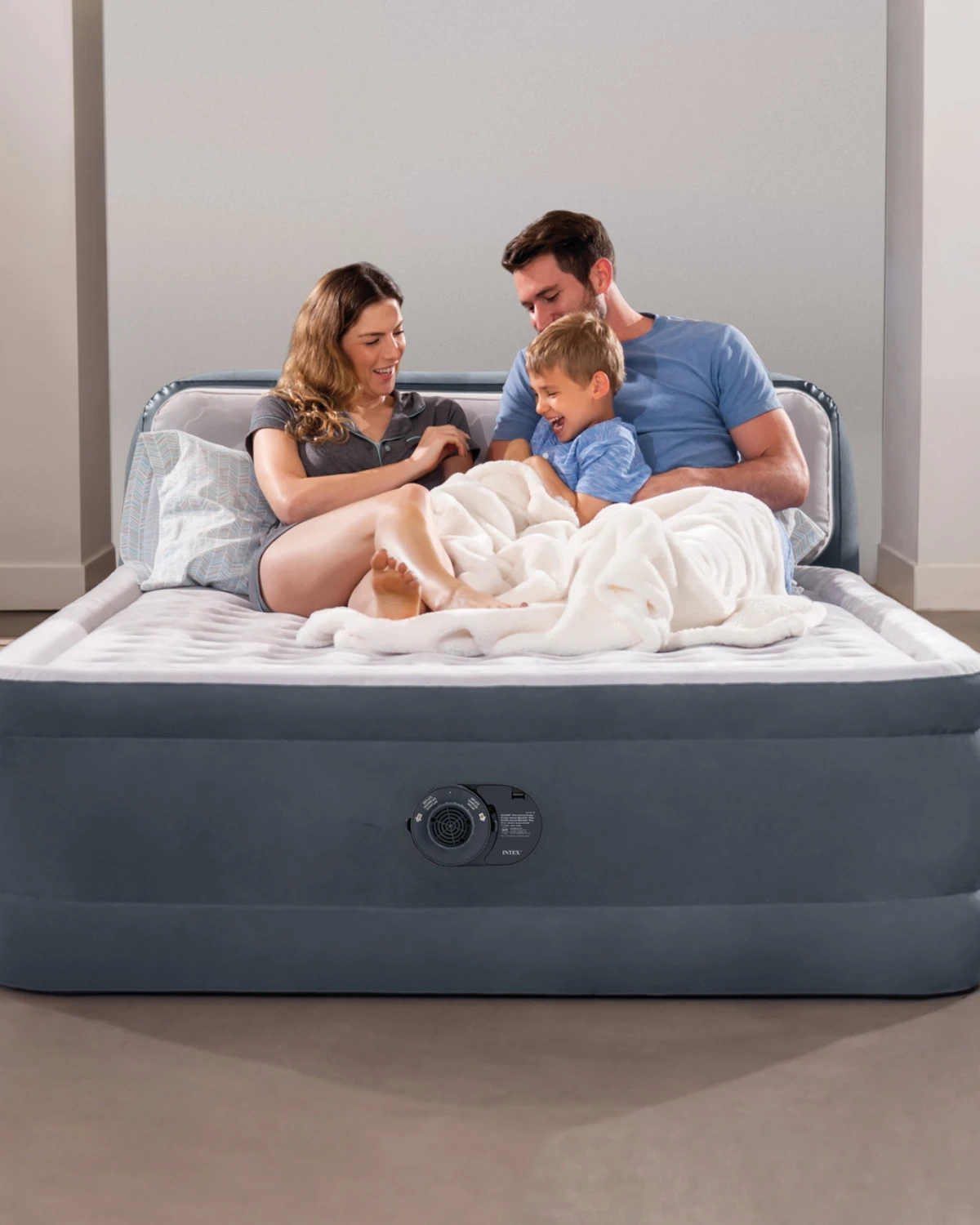
- Memory Foam: This is my top pick. A 2 or 3-inch memory foam topper gives you that classic “sinking in” feel that cradles your body and relieves pressure points. It’s a dream for side sleepers. The only knock is that some can trap heat. Expect to pay around $40-$80 for a good queen-sized one.
- Latex Foam: If you don’t like the sinking feeling of memory foam, latex is a fantastic alternative. It’s more responsive and bouncy, and it sleeps much cooler. It’s usually a bit pricier, though.
- Egg Crate Foam: This is your budget option. It’s definitely better than nothing and adds a little softness and airflow, but it compresses easily and doesn’t offer a ton of support.
- Fiberfill (Down Alternative): These are like a big, plush pillow top. They feel incredibly soft and cozy at first but tend to flatten out overnight. You might need to fluff it up each day if you’re using it for a while.
I keep a 2-inch memory foam topper rolled up with our guest mattress. It makes all the difference.
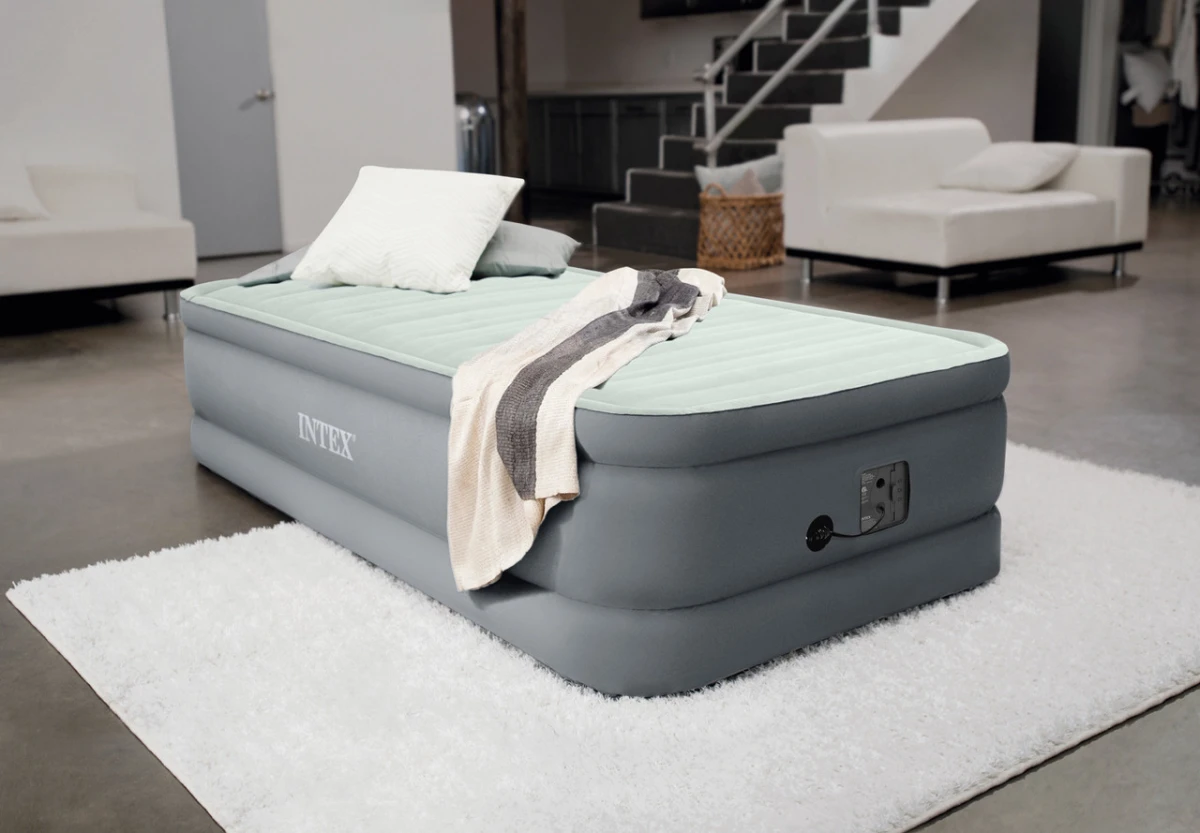
Don’t Skimp on the Bedding
Use the same quality sheets, pillows, and blankets you’d use on your regular bed. It makes a huge psychological difference. A quilted mattress protector is also a great idea—it adds a little padding and cuts down on the crinkly sound of sheets on plastic. And make sure you use deep-pocket fitted sheets! Air mattresses are thick, and a sheet that’s too small will pop off the corners all night long.
The Final Boss: Getting It Back in the Bag
Ah, the final challenge. You’ve had a great night’s sleep, and now it’s time to put the mattress away. We all know the struggle of trying to wrestle it back into that ridiculously small storage bag. It’s not impossible, I promise.
Here’s the trick:
- Let the Air Out… All of It. Open the valve completely. Some pumps have a deflate function—use it! If not, just let it sit for a bit.
- Fold it Lengthwise. Once it’s mostly flat, fold the mattress into thirds along its length, creating one long, narrow strip.
- Roll, Don’t Fold. Start rolling it up tightly from the end OPPOSITE the valve. This is key. As you roll, the remaining air gets pushed out toward the open valve.
- Use Your Knees! Kneel on the mattress as you roll to press out every last bit of air. A tight roll is a small roll.
It might take a try or two, but once you get this technique down, it’s a piece of cake.
A Few Last Words on Safety and Care
Just a couple of important things to keep in mind for safety and making your mattress last.
Heads up! This is the most important part: NEVER, ever place an infant under 15 months old to sleep on an air mattress. The soft surface poses a serious suffocation risk. This isn’t just a suggestion; it’s a critical safety warning from consumer product safety experts. Always use a certified crib or bassinet for infants.
Also, every mattress has a weight limit (e.g., 300 lbs for a twin, 600 lbs for a queen). Respect it. Overloading is the fastest way to pop an internal baffle, which creates a giant, unfixable bulge.
Finally, when your mattress is new, it will have a strong plastic smell. That’s just off-gassing from the manufacturing process. Unfold it and let it air out in a garage or a room with open windows for a day before you use it.
So there you have it. An air mattress might not be a permanent solution, but it definitely doesn’t have to be a form of torture. With a little bit of prep work, you can create a surprisingly cozy and supportive bed for you or your guests. Trust me, the effort is well worth it.
Inspirational Gallery
The Topper Transformation: The single most effective upgrade for any air mattress is a quality mattress topper. A 2-to-3-inch memory foam topper, like those from Linenspa or Tempur-Pedic, will contour to your body, provide pressure relief, and create a significant thermal barrier against the cold air inside. It completely changes the sleeping surface from a plastic balloon to a genuinely supportive bed.
- Eliminates that ‘sleeping on the floor’ feeling.
- Makes getting in and out of bed dramatically easier.
- Creates a stable, bed-height surface.
The secret? Placing your air mattress on a dedicated folding cot frame. Brands like Coleman offer cot-and-mattress combos that pack away easily but provide the structure and height of a real bed frame.
Is it possible to make an air mattress look less… temporary?
Absolutely. Think like a decorator. Use a bed skirt (or a queen-sized flat sheet tucked neatly) to hide the plastic base. Instead of a sleeping bag, use proper layers: a fitted sheet, a flat sheet, a cozy comforter, and at least two full-size sleeping pillows. It tricks the eye and makes the entire setup feel more permanent and inviting.
The ‘crinkle’ of an air mattress is often cited as a major sleep disruptor. A 2017 study on hospital noise found that intermittent, unexpected sounds are more likely to disturb sleep stages than constant, low-level noise.
To combat this, lay a thick, soft blanket directly on the mattress surface, under the fitted sheet. A plush fleece or a quilted mattress protector works wonders to muffle the sounds of movement, creating a quieter, more serene sleep environment.
A common mistake: Inflating the mattress until it’s rock-hard. While it feels supportive at first, this puts maximum stress on the seams, increasing the risk of leaks. It also makes the surface unforgiving. A better approach is to inflate to about 90% full—firm, but with a slight give when you press down with your hand. It will be more comfortable and prolong the life of your mattress.
Don’t forget the details that make a guest feel cared for. A small
Flocked Top: This common velvety surface is there to prevent bedding from sliding off and to offer a slightly softer feel. It’s great for comfort but makes spot-cleaning and patching a challenge.
Smooth PVC Top: Often found on camping-specific models, these are slicker but far easier to wipe down and repair. If you’re using full bedding, the slipperiness is less of an issue.
For guest use at home, the flocked top is generally more comfortable. For rugged outdoor use, smooth PVC is more practical.
Did you know that PVC, the material used in most air mattresses, can become stiff and brittle in the cold? Storing your mattress in an unheated garage or shed through the winter can lead to cracks when you unfold and inflate it next season.
That faint plastic odor from a new air mattress can be off-putting. Before its first use, inflate it and let it air out for a day, preferably in a well-ventilated room or even outdoors in the shade. Wiping it down with a damp cloth and a mild soap solution can also help neutralize the initial factory smell.
If you’re faced with a slow leak in the middle of the night and the pump is too loud, a manual hand pump is your silent saviour. The kind used for pool floats or yoga balls, like the Intex Double Quick Hand Pump, can add just enough air to get you through to morning without waking the entire house.










